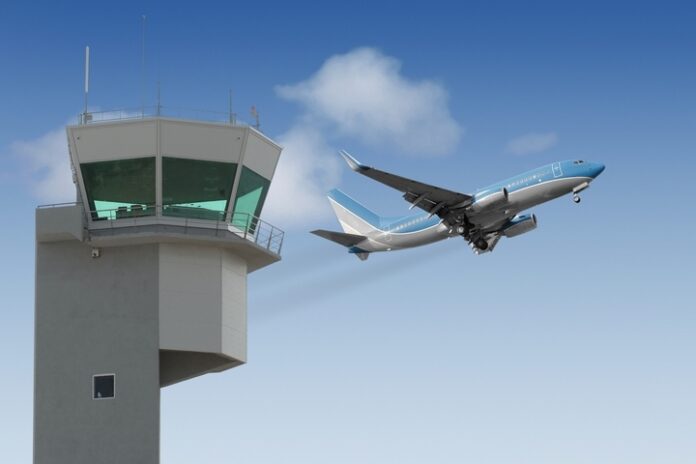Air traffic management system aims to move aircraft efficiently and safely through the airspace system. Controllers work together to keep aircraft at safe distances while moving them from one airport to another using set routes. They use visual references, computers, and radars to communicate with pilots throughout the flight to relay information back and forth between outgoing and incoming flights. Here is a detailed look at how air traffic control systems work:
Before Takeoff
The air traffic control system has numerous workers assigned to specific zones. Different departments work together to provide robust air traffic control.
Before take-off, carriers usually submit a flight plan to inform every controller about the details of the entire journey. Pilots operating the aircraft at the airport will communicate with the local controllers.
The weather forecast gets communicated by the air traffic controller at the tower to the pilot. Mandated controllers in the tower will also check the vessel before permitting it to take off the ground.
In the Air
The pilot will talk to a different controller using a radar screen when airborne. The controller will help track the aircraft’s progress through the airway system.
Every controller has a different responsibility for the aircraft at different airspace points. When the aircraft reaches a specific point, the controller will coordinate the handover with the next controller. The same process will continue throughout the journey until the aircraft gets handed over to a controller at the final destination.
Controllers monitor most airlines using routes called ‘controlled airspace’ and radar in the airway. The rest of the uncontrolled airspace is used by recreational and military pilots.
Air traffic control services are offered in this space, especially near airfields. Most of the responsibility is for the pilots to notice and avoid each other.
The Importance of Air Traffic Controllers
An air traffic controller’s role is to maintain the aircraft’s safety before take-off and in the air. Without an air traffic control system, pilots cannot fly an aircraft.
In an emergency, the controller will inform the authorities and handle the situation kindly. They are trained to multitask and work under pressure throughout such events.
Air traffic controllers must have the ability to concentrate and sit for long hours while reading visuals and graphs. They must also be able to work under pressure and be proficient in math.
Controllers use transponders to deliver a response when they get a radio frequency interrogation. They also use transponders and additional collision avoidance devices to pinpoint planes on a radar spoke. Controllers are quick to handle emergencies such as engine failures to help pilots land safely without tragedy.
Safe and Secure
Every factor is decided beforehand, from the path of the flight to the runway. Air traffic controllers help pilots stick to the plan and be in contact if the aircraft goes off route. The main aim is to prevent collisions and a great flow of air traffic for a seamless and safe journey.
Some airports make air traffic control towers extra tall to create a more optimal view for controllers to observe the entire airport environment. There have been emerging trends where airports use modern technology to promote remote working. They use cameras to feed information to controllers, increasing the potential to improve efficiency and reduce emissions.
Hire the Best Air Traffic Management System Designer
The best air traffic management system designer will apply and develop advanced technologies for superior data, voice, video, and fax communications. A company dedicated to offering its clients innovative design solutions will provide you with high-quality communications.
Prioritize a company that collaborates with your engineering staff to integrate licensed components and transfer technologies into your products quickly. An innovative company with capable and diverse technical personnel teams can offer the support needed to complete any project on time.











